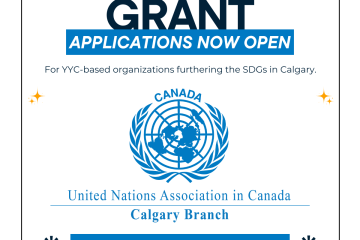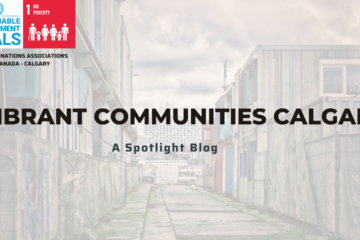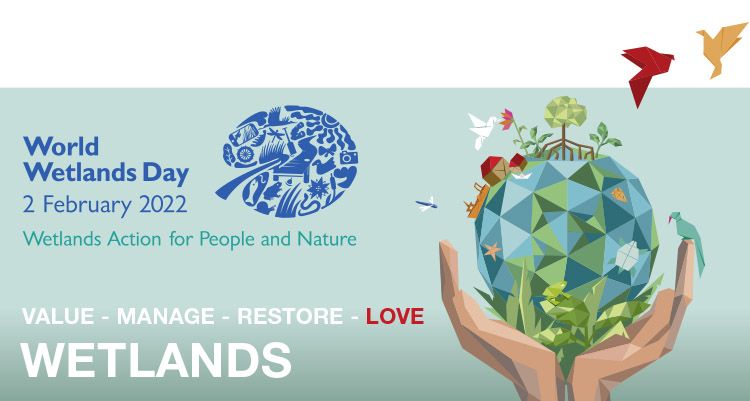
Image source: worldwetlandsday.org
Wetlands: From Mexico City to Calgary –
a story of loss and hope
By: Leonardo Conde Fernandez
When I was a child I used to think the wetlands were just another attractive and taken for granted feature of the landscape in the Southwest of Mexico City in the municipality of Xochimilco. My parents used to take me with my sister to walk along some of the channels and I remember that the lacustrine area was an impressive habitat for different types of birds, fishes, amphibians, butterflies, bats, and of course an assortment of insects including the pervasive legions of hungry mosquitos.
Now, that same area has been reduced to a few small channels of water.
Where before nature offered many ecosystem services like water filters and flood control, you now see parking lots, unplanned streets, a myriad of houses, gas stations, big malls, and illegal dumps. Unfortunately, also most of the fauna is gone!
I live in Calgary now, and when I take the pathway to the southeast of Bow river, I cannot help but wonder what it means to the Calgarians. Will we continue to value our wildlife? or will we experience a similar rate of destruction as the one that took place in Mexico City?
In 1997, the United Nations began observing World Wetlands Day (February 2), considering them as “critically important ecosystems that contribute to biodiversity, climate mitigation and adaptation, freshwater availability, economies and more.”
This year, the theme for World Wetlands Day is “Action for People and Nature.” It supports a public campaign calling for financial, human, and political investment to save the world’s wetlands from the process of disappearance and also to foster the restoration of those wetlands under the process of degradation.
Wetlands are ecosystems that are saturated with water seasonally or permanently, are usually in flat terrain and can have diverse flora, fauna, climate, soil, water chemistry, etc.
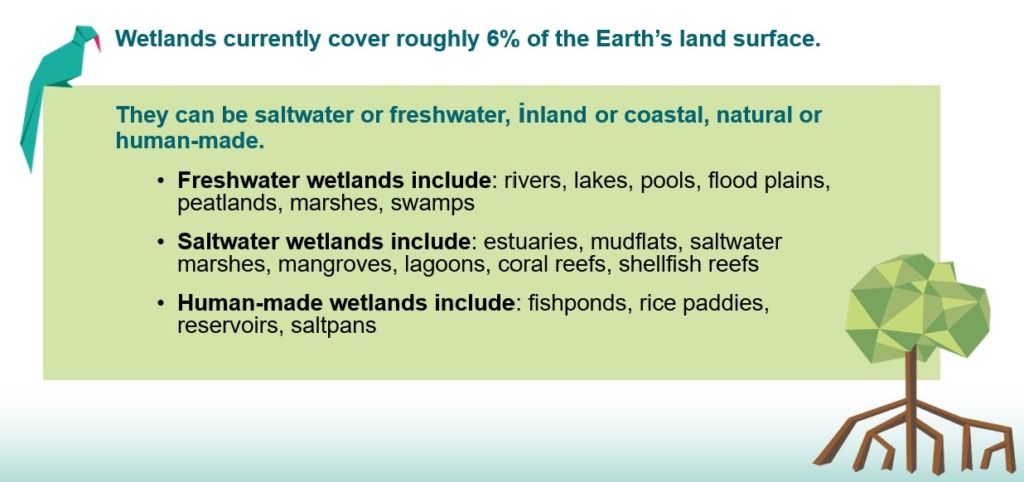
Source: worldwetlandsday.org
Apart from providing essential habitat for wildlife, wetlands act as water regulators by absorbing and holding water during the rainy season then releasing it during droughts, which balances the availability of water for lakes and rivers. They also act as natural filters forcing the runoff water to percolate through the terrain thereby being filtered from debris and some pollutants before reaching major waterways like rivers and lakes.
They are so important in terms of providing ecosystem resilience worldwide, they are present in every continent but Antarctica.
Unfortunately, worldwide wetlands are under threat due to urban sprawling, indiscriminate pollution, climate breakdown, invasive species, improper resource extraction, and ranching, among other causes. Since 1700, 85% of the world’s wetlands have been lost, with just 35% occurring in the last 55 years.
In Canada, 13% of our territory is covered by wetlands, but they have been severely affected and currently suffer vegetation destruction, nutrient and toxic loading, altered flows, and sedimentation. Most provinces have seen a significant loss in the quantity and quality of wetlands. Southern Ontario has lost 68% of its wetlands due to agriculture and housing development. This has increased carbon and GHG emissions, biodiversity loss, water scarcity, food insecurity, and exposure to flooding and extreme weather events among others.
As an effort to save the wetlands, Canada has established 37 protected wetlands under the category of RAMSAR sites, covering 13,086,767 ha. In Alberta, 21% of the surface area is covered by wetlands, extending from the northern boreal forests to the south of the province, and from east to west. Of this, protected wetlands include Beaver hill Lake, Hay-Zama Lakes, Peace-Athabasca Delta.
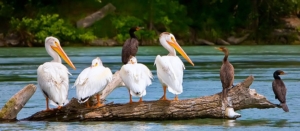
The Inglewood Bird Sanctuary and Nature Centre have been providing migratory birds with a place to rest their wings since 1929.
To date, 270 species of birds, 21 species of mammals and 347 species of plants have been recorded at the Sanctuary and Nature Centre by members of the public, volunteers and staff.
Image source: www.calgary.ca/
It is worthwhile mentioning that the prairies are one of the most representative areas in the north region of the continent; but unfortunately, according to official sources, 90% of the pre-settlement wetlands in Calgary have disappeared because of urban development. The City of Calgary has 8,000 wetlands of different sizes of which we can visit the Inglewood Bird Sanctuary and the Ralph Klein Park.
Based on the nature and ecosystem services off the wetlands, they are fundamental not only for the well-being of diverse species of animals and plants but for ensuring a healthy quality of life for ourselves and for avoiding an environmental crisis.
That is why the protection and restoration of the remaining wetlands bolster the path towards the United Nations Sustainable Development Goals. In particular, the viability of the wetlands supports the goals: 2 “Zero Hunger”; 6 “Clean Water and Sanitation”; 11 “Sustainable Cities and Communities”; 13 “climate Action”; and 15 “Life on Earth.”
The City of Calgary and its wetlands are a source of beauty and admiration for me because of their ecological richness and purpose. However, it also reminds me of how most of the wetlands areas in Mexico City are lost, and that makes me wonder to what extent we are going to be able as a society, to avoid a similar loss in Calgary.
Will we be able to save and even restore some of the essences of the city’s environment and also of the marvelous prairies of Alberta?
Learn more about what you could do to protect our wetlands, and contribute to bolstering the UN Sustainable Development Goals here: https://www.calgary.ca/csps/parks/planning-and-operations/conserving-our-wetlands.html
—————————-
About Leonardo Conde Fernandez
Leonardo is a seasoned professional, with MSc. in Sustainable Energy Development from the University of Calgary, and a B.A. in International Relations from the ITAM in Mexico City, with a background in policy analysis, risk management, and public administration. His focus areas are sustainability frameworks (including the UN 2030 Agenda), climate change mitigation and adaptation strategies, energy, and strategic studies.
References and sources:
- World Wetlands Day 2022, action for people and nature, UN Water: https://www.unwater.org/world-wetlands-day-2022-action-for-people-and-nature/
- National Oceanic and Atmospheric Administration, U.S. Department of Commerce: https://oceanservice.noaa.gov/facts/wetland.html
- Animal Net in: https://animals.net/wetlands/
- Ecological Sciences for Sustainable Development, UNESCO: http://www.unesco.org/new/en/natural-sciences/environment/ecological-sciences/specific-ecosystems/wetlands/
- United Nations World Wetlands Day: https://www.worldwetlandsday.org/material
- Government of Canada, Water Sources: https://www.canada.ca/en/environment-climate-change/services/water-overview/sources/wetlands.html
- Ramsar Organization: https://www.ramsar.org/wetland/canada
- Ramsar Sites Information Service: https://rsis.ramsar.org/sites/default/files/rsiswp_search/exports/Ramsar-Sites-annotated-summary-Canada.pdf?1643555844
- Wetlands Alberta: https://wetlandsalberta.ca/wetlands/index.html
- Conserving Our Wetlands, Parks and Recreation, Government of the City of Calgary: https://www.calgary.ca/csps/parks/planning-and-operations/conserving-our-wetlands.html
